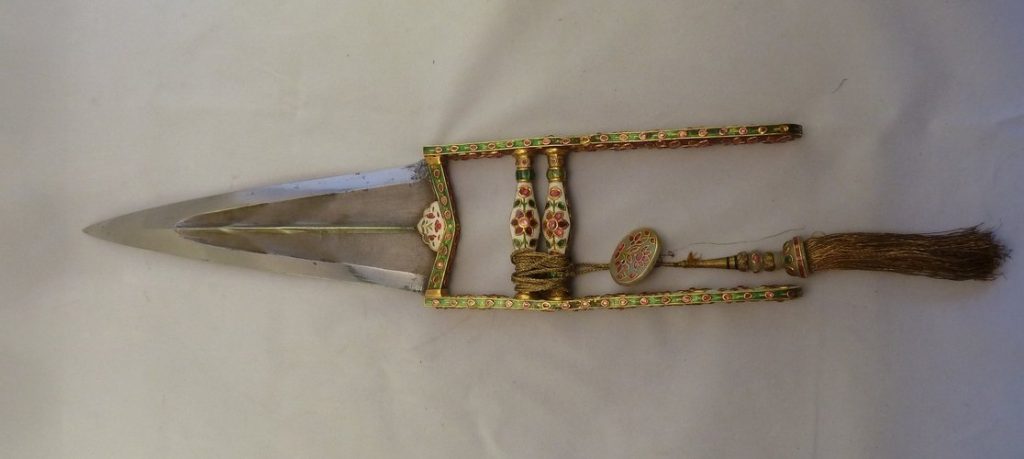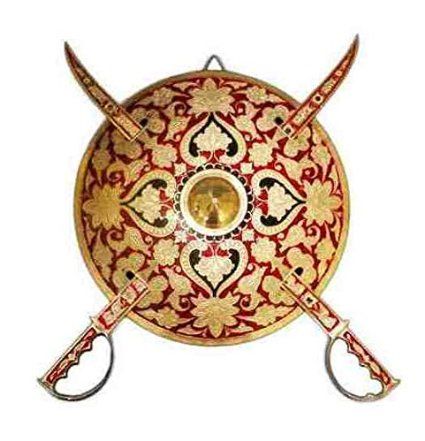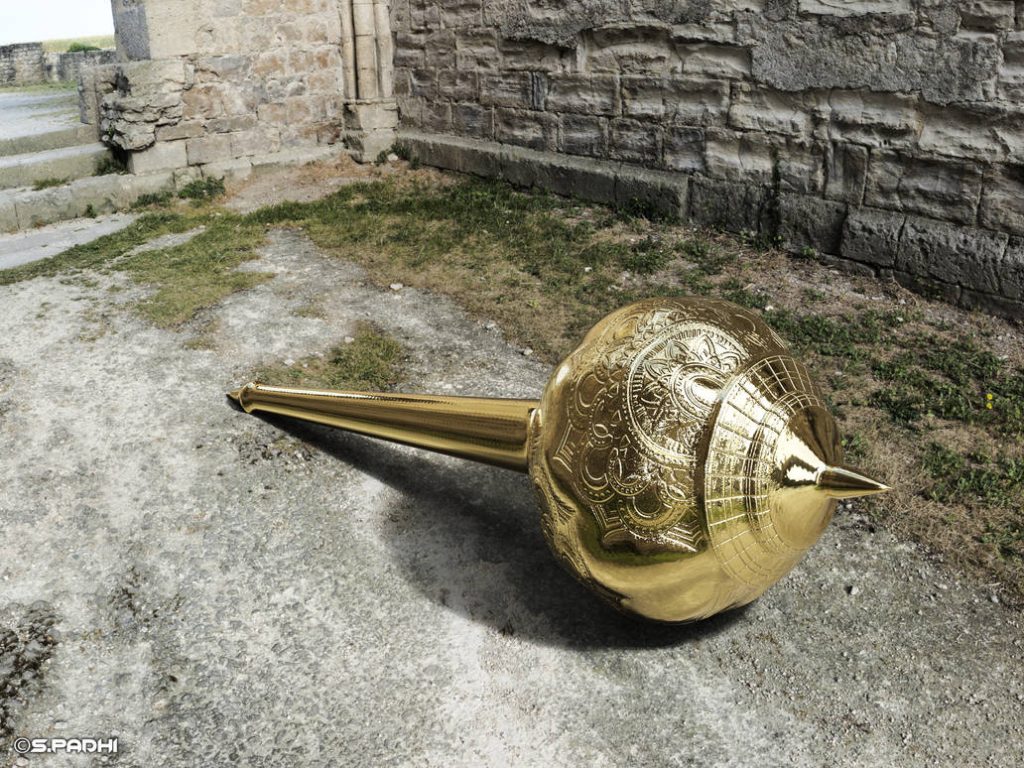Introduction:
Think of Rajputs, and pictures of a prestigious warrior culture and splendorous living promptly come to mind. Walk through India’s numerous exhibition halls and the foremost characteristic objects within the shows on Rajputana culture are most likely to be love and arsenal (unless, of course, one goes into the domain of staggering jewellery). While these well known affiliations are very fitting, what researchers discover curiously is that Rajputs themselves were not very exploratory in their weaponry – choosing to stay with conventional styles of ordnance than embrace more advanced innovation.
Another curious calculation is the stamped contrast between ceremonial weapons (which incorporate the lavish swords and shields that are recorded in canvases) and the weapons of Rajasthan that have been utilized in fight, which might not be as wonderful to see at, but they are lethal.
The 15th century saw an increment in centralised running of the show inside the Rajput kingdoms against the reducing control of the Mughals, driving to a more noteworthy sending of volunteer army. A closer see at the Rajput warrior’s celebrated weapons uncovers curiously objects that are presently protected in galleries and fortifications of the Rajputana states – like a combination of a gun with a sword, more for entertainment than viable utilize, or the popular however bizarre case of a eminent ruler branding his enemy’s chainmail as his own.
The kind of weapons moreover allow a sign of the different impacts from other societies the Rajput may have connected with either within the front line or due to exchange. Then again, it may too be an exhibit of the finest workmanship within the range, sometimes speaking to the foremost vital craft of the time.
Here are the list of Weapons of Rajasthan :
1.Katar (Punch-knife)
(17th century; redesign ,Watered steel, press, and gold Deccan, Jaipur redecoration )
This Deccani watered-steel edge with a strengthened and masterstroke point for punching and fighting through armor and mail was made or formed within the 17th century. In any case, it was mounted on this specific handle within or in the duration of the late 19th century. The gold and silver figures of the ten incarnations of the God Vishnu with a differentiating chestnut ground are too late 19th-century additions.

2.Dhal (Shield)
(late 19th century ,Leather, damascened steel, moonstones, paint and brass Udaipur )
This calfskin shield, other than its estimate, is additionally striking for the expound beautification, and mastery of jeweled and carved bosses and tall quality portray. It starts from the period after the Revolt of 1857. This was a period when the shield had ended up completely or fully repetitive as gear for a warrior or an army but still served as a chunk of enrichment, as an image of rank additionally as a plate on formal events either program including kshatriyas. Within the same and parallel period comparable measured, exceedingly brightened shields made of press and steel coated with brass got to be popular.

Are you fond of the detailed elements in an artwork? Are you waiting to learn a new form of art ? Does the regal and durable beautification always capture your attention ? Learn the art of metal engraving with Rajasthan Studio! Flabbergasted! You read it right! Bingo! Even you can learn the painting style seen in the temple shrine. Exciting news! Get trained personally from the artist who is adept at it. Hakuna Matata! Get all of it at one click.
Make Art Not War – Dhaal & Talwar Engraving With Vishnu Kumar Parihar
What is a Masterclass Workshop?
Rajasthan Studio has specially curated personalized Masterclass Workshops. This ensures the privilege of one to one learning from the expert artists. We only take limited seats in each workshop. Not only you can understand the art technique vividly but also practically do it along. Take back best of the learnt skills and art pieces.

3.Jezail (Matchlock)
(1820–30 Rosewood, steel, gold, and silver, Rajasthan )
The matchlock’s Sindhi-rifled, Damascus-twist barrel highlights eight grooves and a level locating rib. The breech and gag have chiseling and Koftgari work. There’s a copper dot foreknowledge and a valley back located with slanting shoulders, mounted on a stock made of Shisham. The barrel groups are conceivably 19th-century substitutions. The circled sling carriers, still known within the present day or current day Indian armed forces as “ceiling Currie,” have well-formed Makara heads. The plain steel ramrod contains a mushroom-head terminal, and the punctured trigger is overlaid steel.

Do you know? 9 Best Art Galleries of Rajasthan
4.Ankush (Elephant Drive)
(late 19th century Steel, gold Rajasthan)
This exceptionally light Ankush has round chimes within the haft that roll up and down. The sound they make is thought to drive absent fiendish spirits. The Ankush is an antiquated execution utilized from at least the 6th or fifth century BCE. The fourth century BCE, depicted war elephants carrying three outfitted men and a fourth man who carries in his hand the goad where with he guides the creature, much within the same way as the pilot and captain of a dispatch coordinates its course with the helm.

5.Talwar (Saber)
(Edge: c.1880; grip: early 20th century)
Watered steel edge; steel grip with gold inlay Blade: Persia, grip: Rajasthan This watered-steel shamshir edge with Ricasso and cut-away spine was likely made in Persia for the Indian showcase. Persian dealers created solid deals in Rajasthan, and generally unsigned, Persian dark watered-steel edges are common from the late nineteenth century. This case, be that as it may, has two engravings: Bandih-yi vilayat-i Shah ‘Abbas, “Abbas the hireling of the Ruler of Holiness,” a Shi’ite line connected to regal swords from the seventeenth century and afterward broadly received to grant gravitas to commercial edges. The grip highlights a Makara, or beast, attempting to capture a rabbit and decorated flowers.

6.Gada (Mace)
(18th century Steel, gold ,Rajasthan)
This ball-headed mace highlights three chakra edges, level steel rings that circle the mace head. The chakra or quoit is antiquated as a vintage Indian weapon. Together with the conch shells, it is one of the god Vishnu’s qualities; the chakra relates to the sun based disk, whereas the conch speaks to the moon. The Maharajas were accepted to be both divine beings on soil and natural agents of the divinity, and numerous rulers related themselves with Lord Vishnu.

Follow Rajasthan Studio on Instagram for more amazing travel content. Reach out to us on email at contact[at]rajasthanstudio[dot]com. This blog is curated by Rajasthan Studio and written by Hitanshi shah.





